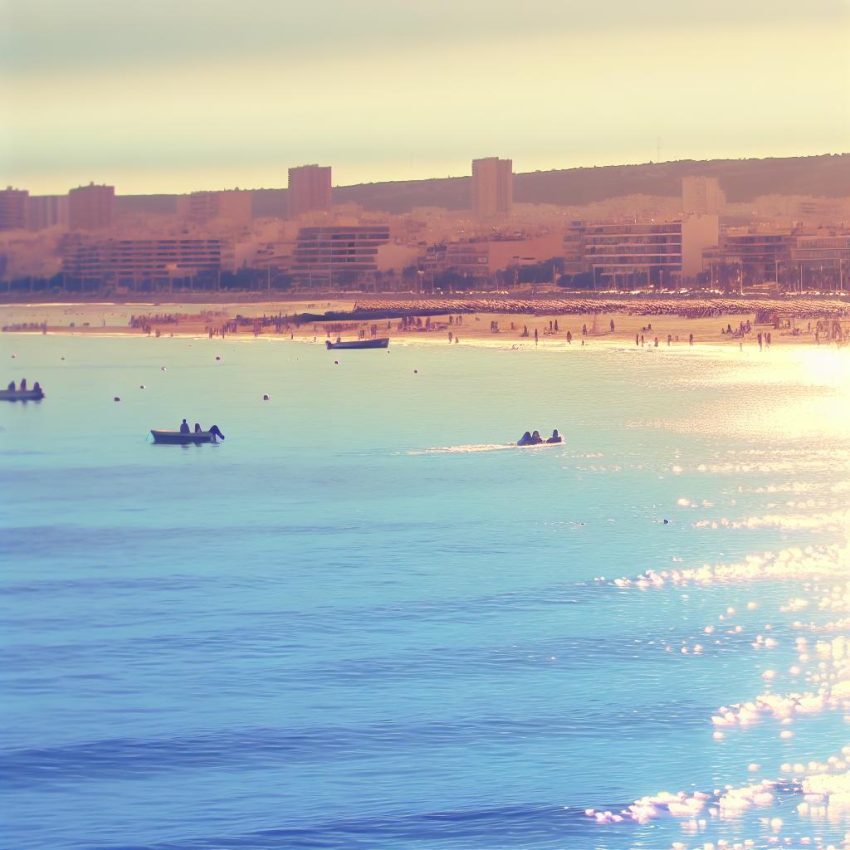Mar del Plata is a prominent city situated on the Atlantic coast in the province of Buenos Aires, Argentina. Approximately 400 kilometers south of the capital city, Buenos Aires, it serves as a major port and a key tourist destination in the country. Its strategic position along the coastline not only provides scenic beauty but also plays a significant role in its economic and cultural life. As a city that beautifully combines traditional charm with modern attractions, Mar del Plata offers a rich tapestry of experiences for residents and visitors alike.
Geographical Location
The geographical positioning of Mar del Plata, nestled along the Atlantic coast, provides it with an increasing influence as a maritime gateway to Argentina. This location has historically contributed to its development as a well-established port, supporting various industries and facilitating international commerce. The city’s port serves as a hub for both commercial fishing fleets and freight shipping, playing a significant role in Argentina’s economy.
The proximity of Mar del Plata to Buenos Aires, the capital of Argentina, also enhances its accessibility and appeal as a tourist hotspot. This ease of access has made it a favored destination for those looking to escape the hustle and bustle of Buenos Aires, offering a blend of sandy beaches, cultural sites, and a lively social atmosphere.
Climate
Mar del Plata experiences a temperate oceanic climate, characterized by mild summers and cool winters. This climate is influenced by its coastal location, providing moderation in temperature extremes while offering an enjoyable environment throughout the year. During the warmest period, which occurs between December and March, temperatures typically range from 20°C to 30°C. This period coincides with the high tourist season, where visitors flock to the beaches and enjoy various outdoor activities.
Conversely, the winter months from June to August can see temperatures drop to around 0°C to 10°C. Although cooler, the winters are relatively mild compared to many other regions at similar latitudes, which can drop much lower. The city is also known to experience cooler sea breezes, adding to the overall pleasant climate. Precipitation is relatively evenly distributed throughout the year, with occasional heavier rains occurring between March and May. These rains are essential for maintaining the lush greenery and natural beauty that Mar del Plata is known for, supporting both the local ecosystem and agricultural activities in the surrounding areas.
Economy
The economy of Mar del Plata is diverse, with significant contributions from tourism, fishing, and industrial sectors.
Tourism is undoubtedly the cornerstone of the local economy. The city experiences an influx of tourists, particularly during the summer months, attracting a large number of domestic and international visitors looking for a seaside vacation spot. The numerous beaches, cultural festivals, and recreational opportunities support the vibrant tourism industry. The city’s infrastructure is well-equipped to handle the seasonal inundation of visitors, with numerous hotels, restaurants, and entertainment options available.
Fishing plays a central role in Mar del Plata’s economy as well. The city hosts one of the largest fishing ports in Argentina, functioning as a primary point of export for various seafood products globally. Several local processing plants contribute to this thriving industry, providing employment and supporting the local economy. Fish such as hake, squid, and shrimp are commonly processed and exported, sustaining Mar del Plata’s status as a seafood hub.
The industrial sector in Mar del Plata includes food processing plants, textile manufacturing, and other light industries. These industries are primarily driven by local needs but also contribute significantly to the national economy. The presence of these industries further diversifies the economic landscape of the city, creating numerous employment opportunities and fostering economic stability.
Tourist Attractions
Mar del Plata is famous for its expansive and inviting beaches, such as La Perla, Bristol, and Punta Mogotes. These beaches are popular among sunbathers and swimmers alike, offering a perfect backdrop for relaxation and leisure activities such as beach volleyball and sunbathing. The city’s coastline also offers opportunities for more adventurous water sports, including surfing, sailing, and windsurfing, attracting enthusiasts from around the globe.
Cultural attractions are rich and varied in Mar del Plata. The Cultural Centre Villa Victoria and the Juan Carlos Castagnino Municipal Art Museum are key locations that cater to art enthusiasts. These venues showcase a variety of exhibitions, including modern art, historical pieces, and local artwork, reflecting the city’s dedication to fostering a strong cultural presence.
The Teatro Colón of Mar del Plata is a historic theatre venue that stands as a testament to the city’s rich cultural tapestry. It hosts numerous cultural events, including plays, concerts, and operas, offering residents and tourists access to world-class performances in a beautiful historical setting.
Challenges
While Mar del Plata enjoys a booming summer tourist season, it faces certain challenges that necessitate strategic planning and solutions. One of the major issues is the potential for seasonal unemployment. The city must address the seasonal nature of its tourism industry to maintain economic stability throughout the year. The reliance on tourism means that income and employment fluctuate, peaking in summer and potentially leaving gaps in the off-season months. Diversification of economic activities and continuous promotion of the city as a year-round destination could mitigate this challenge.
Environmental concerns, such as coastal erosion and pollution, also require attention to ensure the sustainability of Mar del Plata’s natural attractions. As a natural tourist asset, the beaches and coastal areas must be preserved for future generations’ enjoyment and for maintaining the ecological balance. Addressing these concerns involves implementing sustainable practices that preserve the natural environment while continuing to allow for tourism and urban growth.
For further information on Mar del Plata’s offerings and tourism opportunities, consider visiting the official tourism website of the city, which provides extensive resources about the current attractions and seasonal events for potential visitors.

